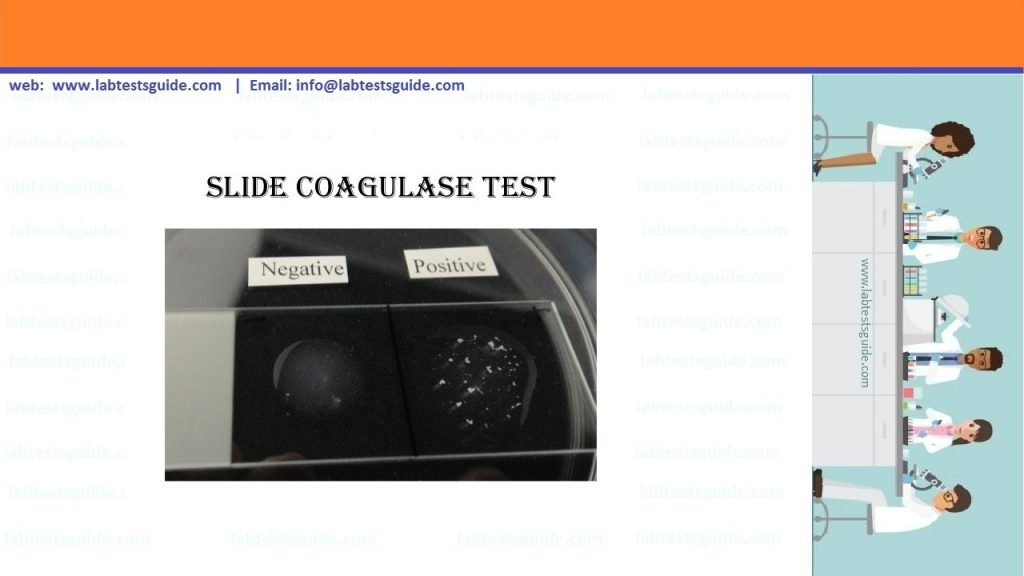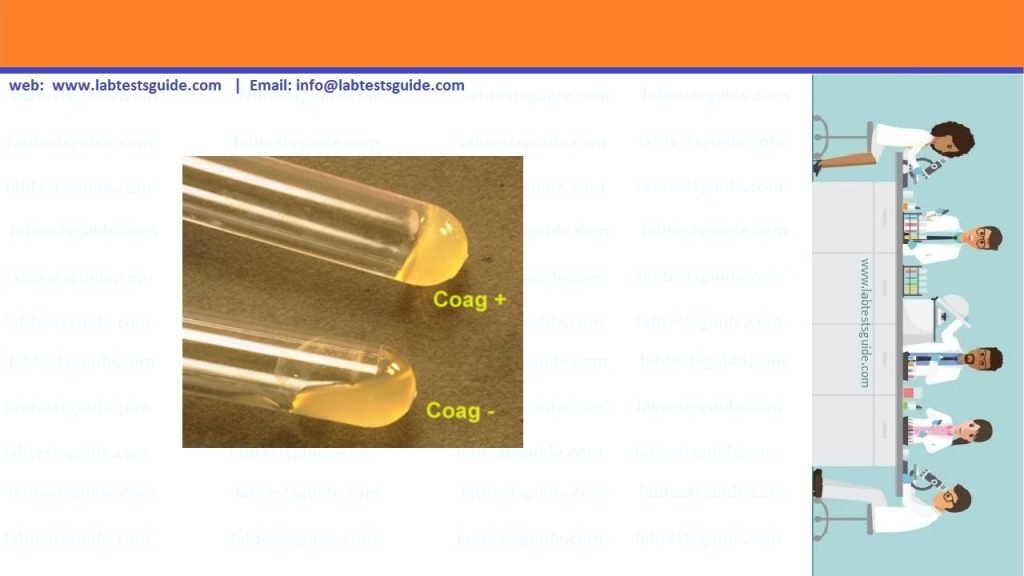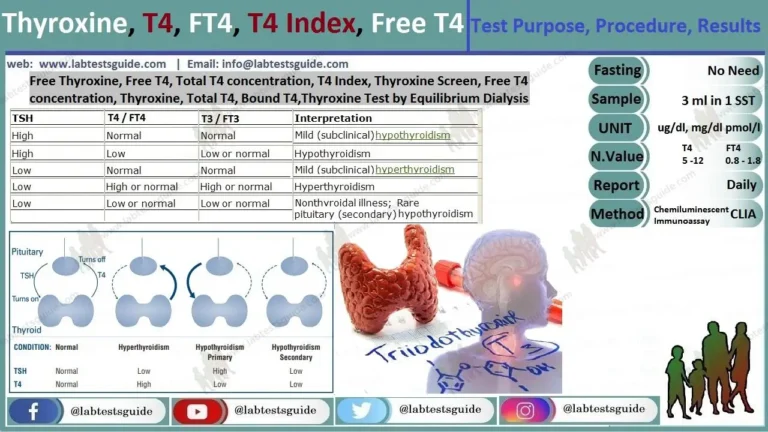Coagulase test is used to differentiate Staphylococcus aureus (positive) from Coagulase Negative Staphylococcus (CONS). Coagulase is an enzyme produced by S. aureus that converts (soluble) fibrinogen in plasma to (insoluble) fibrin. Staphylococcus aureus produces two forms of coagulase, bound and free.
- Slide coagulase test is done to detect bound coagulase or clumping factor.
- Tube coagulase test is done to detect free coagulase.
Coagulation Test (Slide Method)

- Emulsify a staphylococcal colony in a drop of water on a clean and grease-free glass slide with a minimum of spreading (If the isolate does not form a smooth, milky suspension, do not proceed with the test).
- Make similar suspensions of control positive and negative strains to confirm the proper reactivity of the plasma.
- Dip a flamed and cooled straight inoculating wire into the undiluted plasma at room temperature, withdraw, and stir the adhering traces of plasma (not a loopful) into the staphylococcal suspension on the slide. Flame the wire and repeat for the control suspensions.
- Read as positive a coarse clumping of cocci visible to the naked eye within 10 seconds. Read as negative the absence of clumping or any reaction taking more than 10 seconds to develop, but re-examine any slow reacting strains by the tube coagulase test.
- Emulsify a staphylococcal colony in a drop of water on a clean and grease-free glass slide with a minimum of spreading (If the isolate does not form a smooth, milky suspension, do not proceed with the test).
- Make similar suspensions of control positive and negative strains to confirm the proper reactivity of the plasma.
- Dip a flamed and cooled straight inoculating wire into the undiluted plasma at room temperature, withdraw, and stir the adhering traces of plasma (not a loopful) into the staphylococcal suspension on the slide. Flame the wire and repeat for the control suspensions.
- Read as positive a coarse clumping of cocci visible to the naked eye within 10 seconds. Read as negative the absence of clumping or any reaction taking more than 10 seconds to develop, but re-examine any slow reacting strains by the tube coagulase test.
Observation:
- Coagulase positive: Macroscopic clumping in 10 seconds or less in coagulated plasma drop and no clumping in saline or water drop.
- Coagulase-negative: No clumping in either drop
Interpretation: Slide coagulase test is the main method used to identify S. aureus in clinical laboratories but it has some limitations.
- About 15% of ordinary strains of S. aureus and many more of MRSA give negative reactions.
- Few species of coagulase-negative staphylococci give positive reactions.
Coagulation Test (Tube Method):
- Detects staphylocoagulase which reacts with coagulase-reacting factor (CRF). CRF is a thrombin-like molecule
- Staphylocoagulase and CRF combine to indirectly convert fibrinogen to fibrin
- A suspension of the organism is suspended and incubated with plasma at 37°C
- Clot formation within 4 hours indicates a positive test
- Positive test indicates Staphylococcus aureus
- Some species of Coagulase negative staphylococcus can be positive
- Negative tubes should be held overnight at room temp.
- Some species possess enzyme that can cause the dissolution of clot after prolonged incubation
Tube Coagulase Test Procedure

- Prepare a 1-in-6 dilution of the plasma in saline (0.85% NaCl) and place 1 ml volumes of the diluted plasma in small tubes.
- Emulsify several isolated colonies of test organism in 1 ml of diluted rabbit plasma* to give a milky suspension.
- Incubate the tube at 35°C in ambient air or in a water bath for 4 hours.
- Examine at 1, 2 and 4 hours for clot formation by tilting the tube through 90°. (Clots may liquefy after their formation)
- Leave negative tubes at room temperature overnight and re-examine.
(This step is essential, for some strains of S. aureus, including many MRSA, produce a delayed clot which is rapidly lysed at 37°C by the organism’s staphylokinase.)
ObservationRead as positive any degree of clot formation. Often the plasma is converted into a stiff gel that remains in place when the tube is tilted or inverted, but sometimes clots are seen floating in the fluid.
- Coagulase Positive: Clot of any size eg. Staphylococcus aureus
- Coagulase Negative: No clot (plasma remains wholly liquid or shows only a flocculent or ropy precipitate). eg. Staphylococcus epidermidis
Note: Rabbit plasma is preferable, as it gives better clotting, is free from inhibitors and is safe. Human plasma contains sodium citrate as anticoagulant, and some citrate utilizing bacteria such as Enterococcus faecalis can destroy the anticoagulant and cause clotting. False positive or false negative results can occur if the plasma is not sterile.
Possible References Used




One Comment